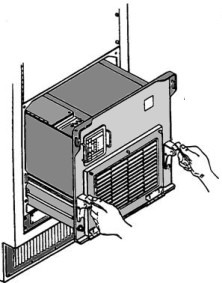Chassis Height
Basically all industrial equipment chassis define their height in Units 'U'. One 'U' [1U] is equal to 44.45mm. Equipment Rack panels and circuit boards are defined the same way. Each unit increase grows by 44.45mm, so 2U is 88.90mm. 1U is normally the smallest blank panel in a rack and the smallest chassis height.
A 1U chassis will normally hold one or two circuit boards mounted in the chassis horizontally. How ever vertical card mounting is more common and does not have the vibration issues of horizontally mounted cards.
Commercial PC cases are just classified as desk top or tower cases. An embedded PC is the exception and may use the modular unit measurement above. However Rack Mount Computers would be defined the same way an industrial chassis is. Unless of course it was mounted inside a rack-mountable case, which would than be defined in terms of the Units measuring convention.
Chassis Width
Chassis width is given in Horizontal Pitch or HP. One HP [1HP] is equal to 5.08mm. There are three common rack widths; 465mm, 592mm, and 745mm [hole-to-hole]. Standard Rack depths are 17, 24, 29, and 36 inches.
In many cases there may be a need for a fan tray beneath the card cage which will increase the physical size of the chassis. Or maybe just a blank panel to hold an On/off switch and or indicator lights. Either way the physical size of the chassis is almost always larger than the size of the cards it holds.
The board format also effects the size of the chassis, to a degree. A larger board size would require a larger chassis to hold the cards; however, a larger board size might also reduce cost because fewer boards would be needed. Larger boards requires less total
over-head and interconnect circuitry since the interconnect circuitry is needed only on a per board basis.
At the same time some board form factors are more widely used and cheaper than other form factors.
Chassis Weight
The weight is also a consideration that needs to be accounted for, but there might not be anything that can be done. The weight turns out to be what ever the internal components add up to. However in regards to rack design, a larger and heavier equipment chassis should be placed near the bottom of the rank when possible. This positioning keeps the center of gravity of the rack near the floor, reducing the chance of the rack tipping over. If the chassis does need to be placed higher up in the equipment rack than support struts should be added to the rack, so again there is no tipping issue [Rack Support]. Even if you thing the weight of the chassis is directed down the center mass of the rack, you never know when someone will come along and add slide rails, moving the weight outside of the center mass.Circuit Board Form factors; next page
Chassis Section Index; How To Spec out an Equipment Chassis









